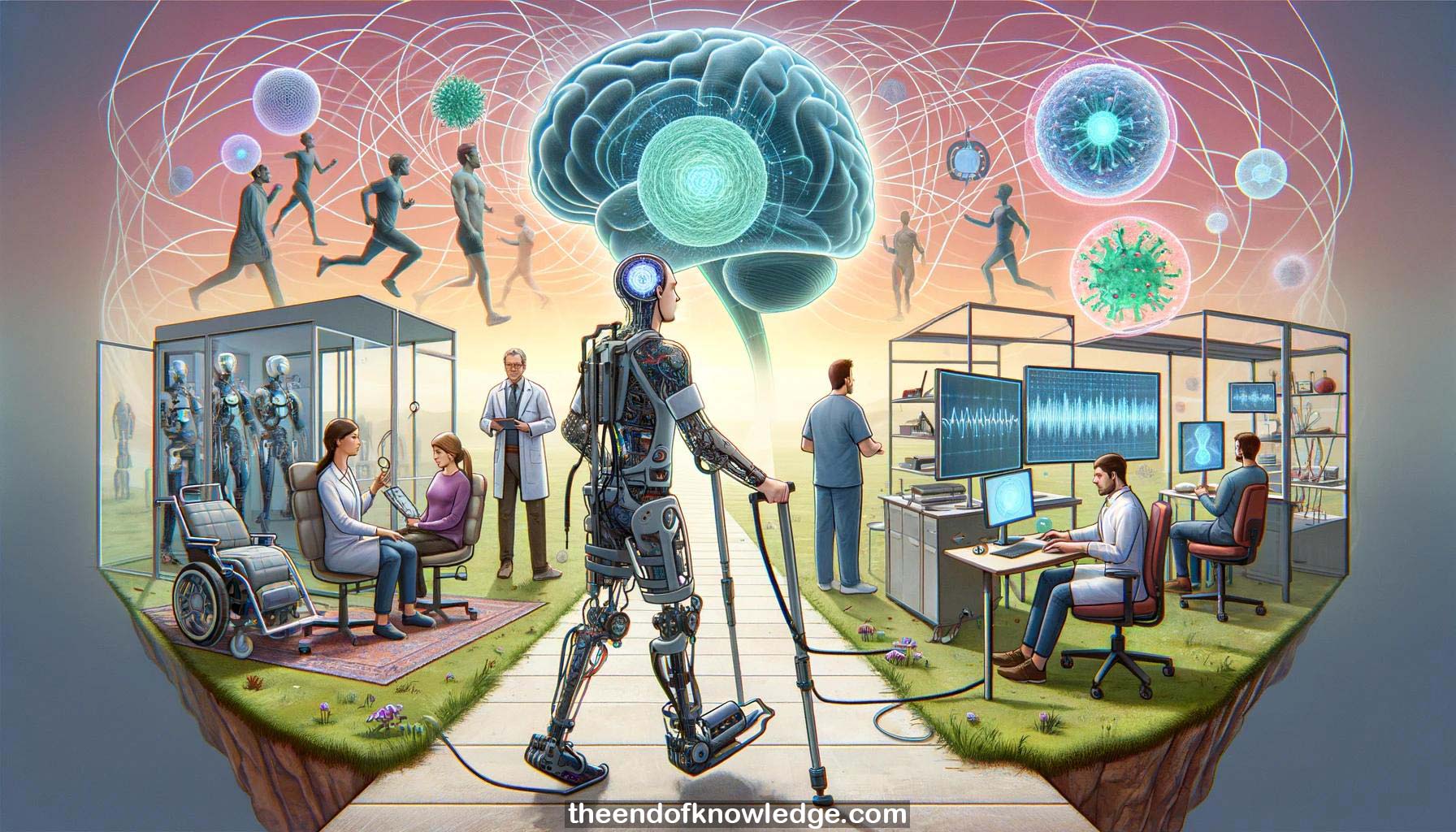 >
>
Concept Graph & Resume using Claude 3 Opus | Chat GPT4 | Llama 3:
Resume:
1.- Jose Maria Azorin discusses brain-computer interfaces (BCIs) for controlling robotic exoskeletons to help people with disabilities walk.
2.- Stroke and spinal cord injuries cause walking difficulties. Traditional rehab uses a bottom-up approach with therapists moving patients' legs.
3.- Exoskeletons with actuators can apply forces to help patients walk, but still use a bottom-up rehabilitation approach.
4.- BCIs can bypass damaged pathways, decoding brain signals to control exoskeletons. This combines bottom-up and top-down approaches for stronger neuroplasticity.
5.- The WALK project (2019-2020) developed a robust BCI to control an exoskeleton with basic commands like walk, stop, turn, speed up/down.
6.- WALK collaborated with hospitals and University of Houston. Open-loop training adjusted static and motion models. Closed-loop tests evaluated real-time control.
7.- WALK used motor imagery and attention level to detect walking intent. 27 EEG electrodes recorded signals, processed to control the exoskeleton.
8.- Results showed the person could use the BCI to walk with the exoskeleton. Accuracy improved over multiple sessions.
9.- Challenges included accounting for EEG differences between static and walking states, and conservative control sometimes stopping the exoskeleton unintentionally.
10.- A follow-up project introduced virtual reality training to reduce exoskeleton training time without negatively impacting closed-loop control performance.
11.- The VR training group achieved similar static accuracy and better motion accuracy compared to the non-VR control group.
12.- Usability tests with spinal cord injury patients found they were satisfied with the BCI-exoskeleton performance. Exertion increased but remained sub-maximal.
13.- The Regate project (2022) is developing a new rehab approach combining EEG-based BCIs and spinal cord stimulation.
14.- Regate uses an asynchronous BCI where the user only needs to think "walk" to start and "stop" to stop, not continuously imagine walking.
15.- Static and motion models were trained using deep learning (EEGNet) on data from initial sessions, then fine-tuned in later sessions.
16.- Fine-tuning all layers of the deep learning models achieved the best accuracy - 54% for static and motion.
17.- In closed-loop tests, users could reliably start walking with the exoskeleton. Stopping accuracy varied between users (35-90%).
18.- Avoiding unintended stops is important. The best unintended stop ratio was 27%, but some users had higher ratios.
19.- Current work aims to improve results by incorporating error potential detection in the BCI algorithm.
20.- Videos demonstrated successful BCI operation, including a live demo with a patient in front of the press, despite distractions.
21.- Key conclusions: Patients can control exoskeletons using EEG-based BCIs. This is likely beneficial, but clinical trials are still needed.
22.- Next steps are conducting clinical trials with many patients over extended periods to validate the rehab benefits of the BCI approach.
23.- The presenter acknowledged the hard work of his lab team members who are advancing the research he presented.
24.- Overall, the research demonstrates impressive progress in using non-invasive BCIs to restore walking in individuals with paralysis or motor impairments.
25.- Further development of this technology could provide a promising new rehabilitation option to improve patients' mobility and quality of life.
Knowledge Vault built byDavid Vivancos 2024